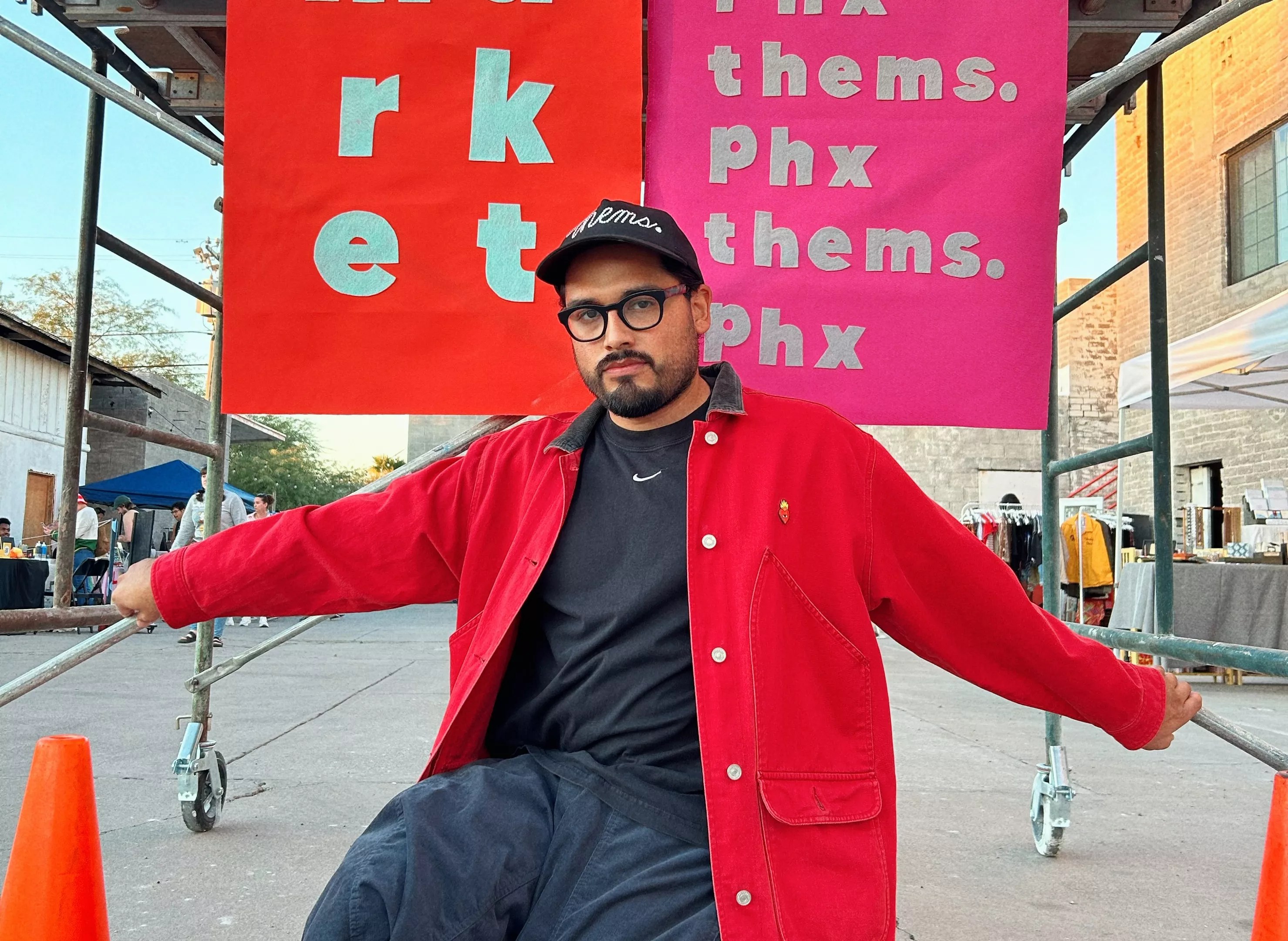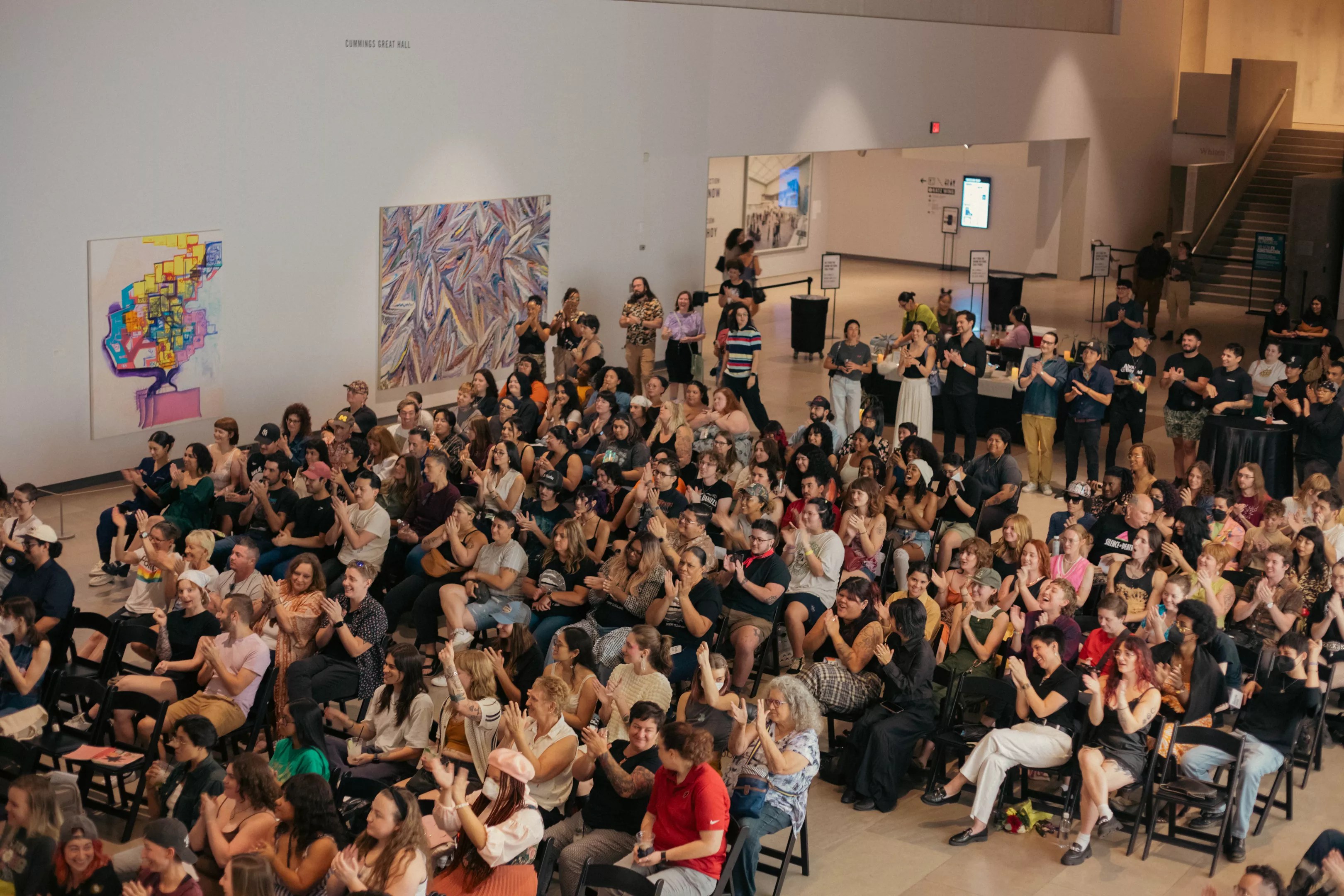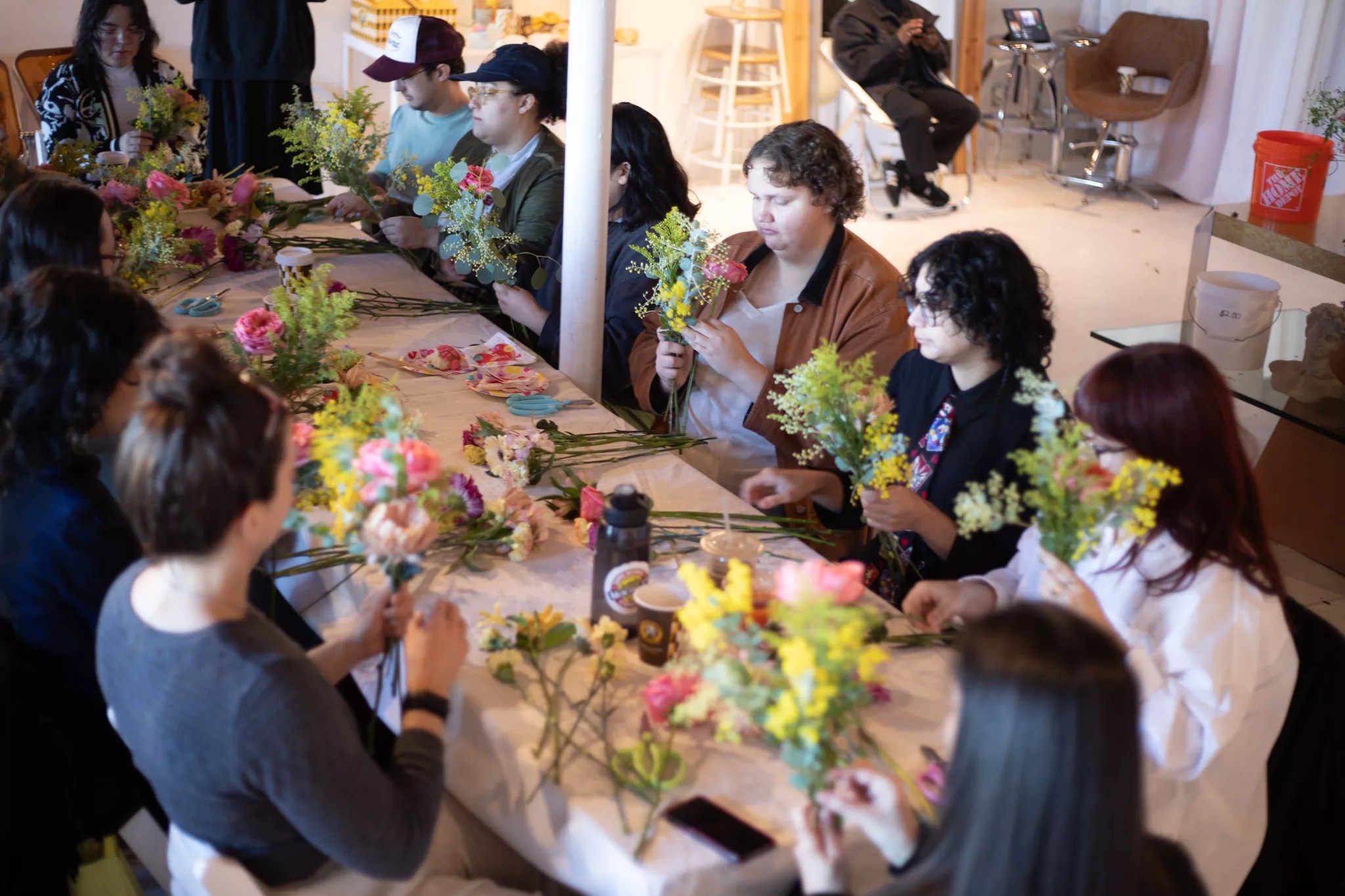
Courtesy of Francisco Diaz

Audio By Carbonatix
A queer arts collective called thems has rapidly evolved to host some of the most well-attended queer events in Phoenix.
With their monthly open mic, Fruity Poetry Night, thems provides a safe space for the creative queer community in Phoenix to show up and celebrate each other while telling stories of lived experiences. A recent evening hosted at the Phoenix Art Museum drew over 350 attendees.
Francisco Diaz, founder of thems, birthed the idea for this support system for queer artists in Phoenix in 2021. As an artist and fashion designer, Diaz felt a lack of queer creative spaces in the Valley beyond bars and clubs. Diaz craved sober spaces focused on community, support systems and creativity where queer people could go to be themselves.
Three years later, thems has demonstrated how many others craved the same thing. With a dedicated volunteer team, including Mante Koliakinaite, owner of Afternoons Studio; Dani Johnson, Writing Lab! curator with ASU; and Juan Jose Oliveros Saldaña, thems now offers regular workshops by queer artists teaching their craft as well as events such as Sunday Sips, a low-key, arts-focused gathering at local coffee shops and monthly poetry nights.
When news happens, Phoenix New Times is there —
Your support strengthens our coverage.
We’re aiming to raise $30,000 by December 31, so we can continue covering what matters most to you. If New Times matters to you, please take action and contribute today, so when news happens, our reporters can be there.
Phoenix New Times spoke with Diaz on the origin story of thems, how their events have evolved to meet the needs of Phoenix’s LGBTQ+ community, the transformative power of poetry and why having inclusive conversations and stepping outside our own circles is vital to creative culture.
Phoenix New Times: What was the inspiration for starting thems and how did it all come about?
Francisco Diaz: thems is about to go into our third year. So looking back, three years ago, I’m an artist myself who makes clothing, so I was attending a lot of markets and different art events around the city. But I just felt like there wasn’t anywhere outside of a bar or club, or things outside the health space for LGBTQ+ people.
At the time, I had a workspace I was renting at Hive on 16th Street, I was in there sewing every day and thought, “Well, I have the privilege of being able to afford this space. Why don’t I open it up to other artists who could come teach a quick one hour workshop of what they do?”
I held a couple workshops there in my studio. It’s tiny, and the first collage workshop we had I was just blown away by the amount of people out there all looking for the same thing: a queer safe space that was celebrating artists. After that first workshop, we had to fit, like, 30 people in a tiny little closet. It was chaos. We just kept growing. It’s been a wild ride.

Community members attend a thems poetry event at Phoenix Art Museum.
Courtesy of Francisco Diaz
What can someone expect coming into your space and at a thems event today?
Now we have our main monthly event, which is Fruity Poetry Night. That is really a space for queer people to gather, express themselves and celebrate each other’s stories. That happens in different spaces around Phoenix, and it’s just an open mic night so people are invited to sign up to read poems or short stories and really just be in community with other people who can relate to what they’re saying. Those have been our most consistent and well-attended events; the one we did at the Phoenix Art Museum got up to around 350 people, so there’s definitely a desire for these events to be happening here in Phoenix.
We also host smaller workshop events, similar to how we started, where we invite an artist to teach and demonstrate what they do already.
Going back to creating a free, authentic safe queer space and seeing how many other people are also looking for that, I’d like to talk more about the creative culture in Phoenix. What can we do to connect more creative communities with each other?
I have a different view of the creative culture, because I live right in the middle of downtown, so I get so many opportunities to engage with artists and go to their shows. So there’s a lot of that already happening; there are so many art markets that bring small creatives together so they can make money and sell art to people outside of their own circles.
But what I always feel is missing is that it seems easier in Phoenix to just invite a bunch of people who look like you, or who are in your immediate circle. So what we’ve been trying to do, and what we can do even better, is getting outside of our immediate circles and finding the people who feel excluded or like their voices aren’t being heard.
With the incoming political administration, it’s important to make space to show that all our communities and rights are connected, and to actually have inclusive conversations, even when that’s uncomfortable.
Absolutely. I think that’s been one of my favorite parts of the Fruity Poetry Night; it’s an open mic, so anyone can go up there and we never know what story they’re going to tell, or what experience they’ve gone through. It’s really helped to give a voice and give a small platform for five minutes of their day to somebody that might not feel seen. For a lot of people who attend, it is their first time ever being in a queer space, or their first time ever having the courage to even say, “I’m queer; this is what I’m going through.”
At our Sunday Sips, we go to different coffee shops in the Valley and we do a very simple prompt, like doing a collage or drawing games. It’s art-focused, but it’s a way for people to meet somebody new and feel comfortable knowing they have a common thread of being queer and making art. I know group chats and friendships have come out of that. It’s very transformative for people to have that space.
I think showing up and doing things like that, outside of what people might think of as a queer event, like in broad daylight at a coffee shop, is also an important way of showing to people outside the community that we are here and we are welcoming as long as others are respectful. So far, it’s been amazing.
It’s very powerful that this is the first time for many folks that they can be themselves in a space and not feel othered. What do you think it is about the poetry night that allows that liberation?
I think we’ve just tried to remove as many barriers to expression as we can and meet people where they’re at. We want to be a friendly face and warm embrace to people who may not feel as out and proud, or supported as we do. We really just want to set the stage, stay away from the programming and let the artists guide what they’re feeling. I’m always so inspired when you open up the space and see what happens.

Thems hosts a floral class at Plum Studios.
Courtesy of Francisco Diaz
Just having that dedicated space for queer community is major.
The time that it takes to organize these events is no small task. We’re run completely by volunteers who are able to take time from their week to get out in the community and help make these events happen. That’s what I’m always blown away by, too – that after every event we have people coming up asking how they can get involved. So not only do people want to attend these events, they are looking for opportunities to build and be a part of something. Now is the time to start.
What is the future of thems?
My goal is to connect with other organizations who are doing similar work. What I’ve noticed in Phoenix is there are so many resources but it’s hard to hear about them. There are so many creatives doing amazing work, but for some reason maybe because we’re not always in the streets, or because we do so much through social media, it can be hard to find. I want to continue to do what we have been doing, but reach out our arms even more to the queer creative community.